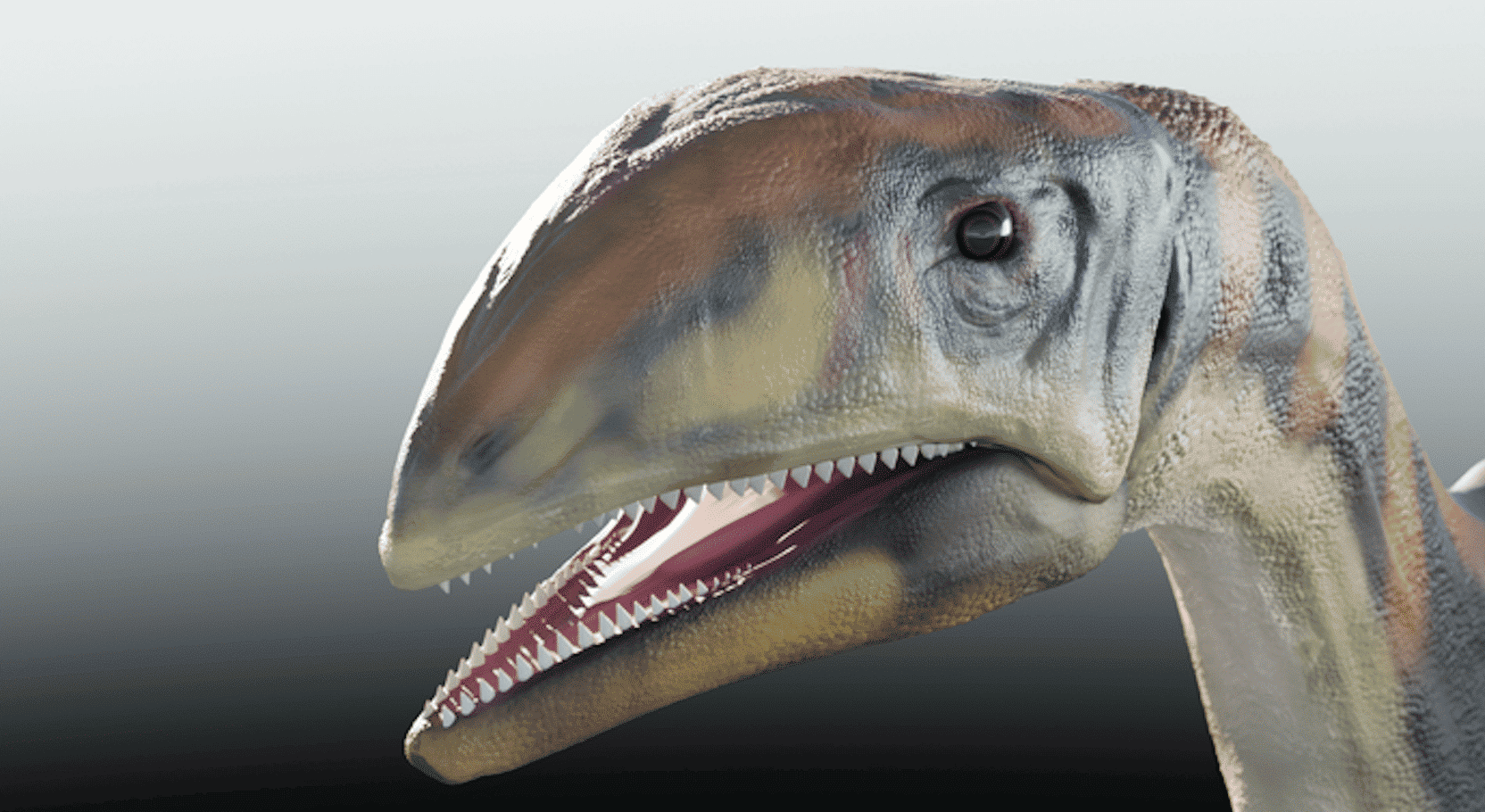

Living reconstruction of Issi saaneq, a newly discovered dinosaur that lived on Greenland 214 million years ago. Victor Beccari
For the first time, scientists have discovered a dinosaur species unique to Greenland.
The new dinosaur was a long-necked herbivore that lived around 214 million years ago, and its scientific name reflects its unique home: Issi saaneq means “cold bone” in Greenland’s Indigenous Kalaallisut language.
“We have selected a name in Inuit language to honor the local culture,” the scientists wrote in the paper announcing their find, published in Diversity November 3.
The new dinosaur is a predecessor to the sauropod dinosaurs, Sky News explained. Sauropods like Brachiosaurus were the largest land animals to ever live. However, the new dinosaur was medium-sized.
The first indication of the new dinosaur came in 1994, when two well-preserved skulls were discovered in East Greenland by Harvard University paleontologists, a Martin Luther University Halle-Wittenberg press release explained. However, at the time researchers did not know it was a unique species. Instead, they thought one of the skulls belonged to a Plateosaurus, another long-necked species that lived in Germany, France and Switzerland during the Triassic Period, from around 252 to 201 million years ago.
However, an international team of researchers from Portugal, Denmark and Germany conducted a micro CT scan of the skulls and then created a digital 3D model of the internal structure of the skulls, as well as the bones that were still buried in sediment. This led to an important discovery.
“The anatomy of the two skulls is unique in many respects, for example in the shape and proportions of the bones,” study lead author Victor Beccari of NOVA University Lisbon said in the press release. “These specimens certainly belong to a new species.”
The new species lived during an important time in Earth’s history. During the Late Triassic Period, from around 235 to 201 million years ago, the supercontinent of Pangea began to break apart to form the Atlantic Ocean.
“At the time, the Earth was experiencing climate changes that enabled the first plant-eating dinosaurs to reach Europe and beyond,” Professor Lars Clemmensen from the University of Copenhagen said in the press release.
The fact that this is a new species unique to Greenland is important, because it helps researchers to understand more about the range of Late Triassic dinosaurs, as well as how sauropods evolved.
“It is the northernmost record of a Late Triassic sauropodomorph, and a new dinosaur species erected for Greenland. Issi saaneq broadens our knowledge about the evolution of plateosaurid sauropodomorphs,” the study authors concluded.

 233k
233k  41k
41k  Subscribe
Subscribe 